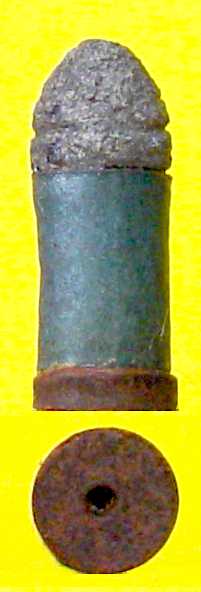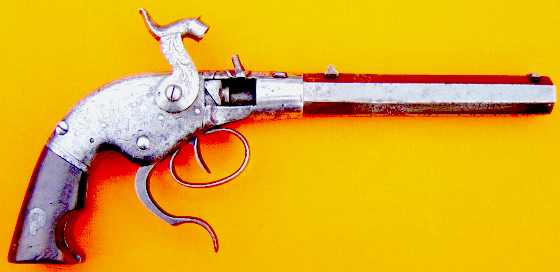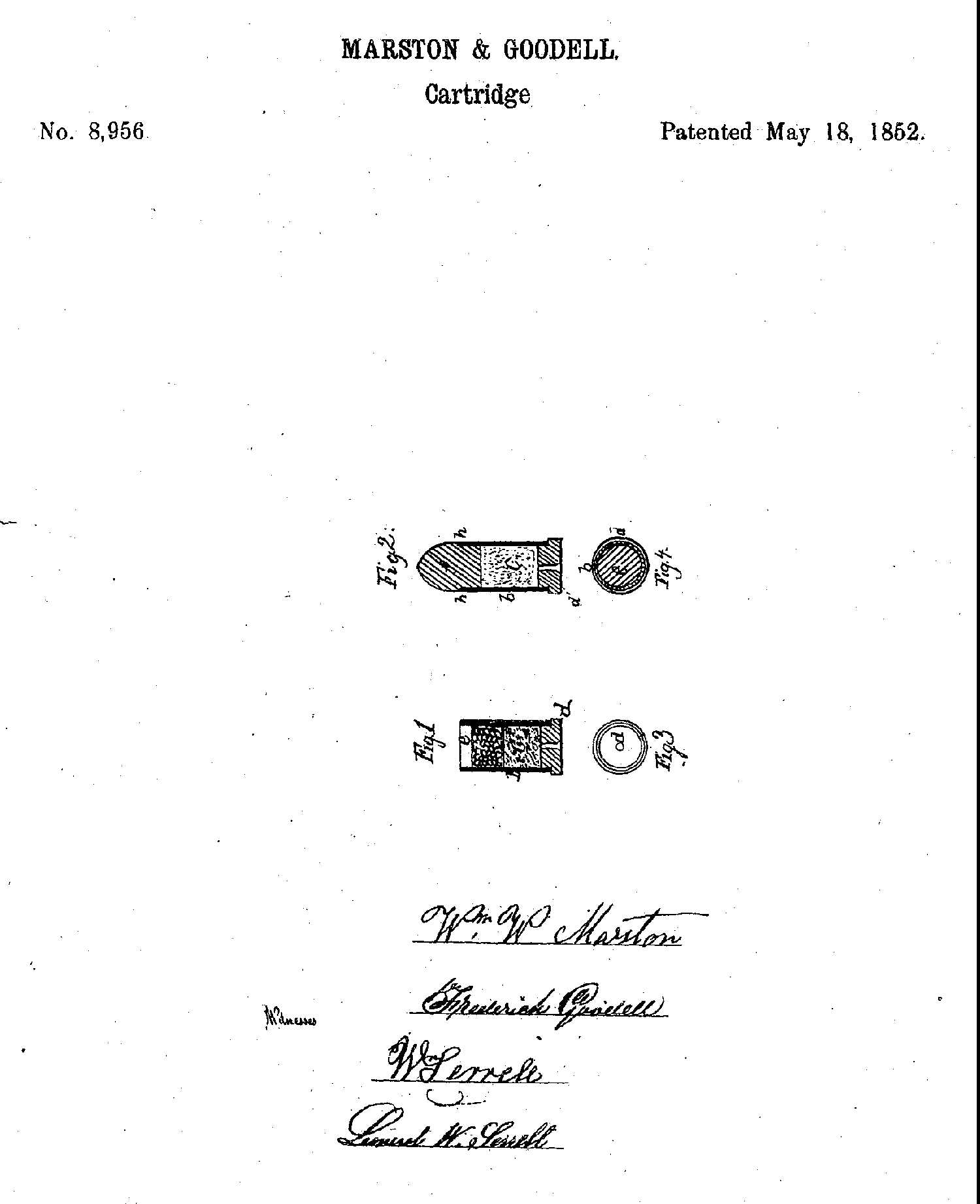|
THE CARTRIDGE COLLECTOR'S EXCHANGE |
| Contents
Cartridge
Lists
Prior Picture Pages:
Links to Other Sites
Cartridge Collectors Organizations:
Auctions:
Books:
Other Collector's Sites: |
Home of the Old Ammo Guy's Virtual
Cartridge Trading Table Featuring a wide range of antique, obsolete, and modern ammunition for collectors Picture Page June 2009 The .36 Marston cartridge......
U.S. patent 8956 was granted to William W. Marston & Frederick Goodell on
May 18, 1852 for this cartridge, which was intended to be used in a
breech-loading single shot firearms of Marston's design, for which he
received U.S. Patent 7443 on June 18, 1850. These firearms used a lever to
draw back a breech block which allowed loading a cartridge into the right side of the frame. This is a separately primed cartridge, meaning it incorporates a pre-measured powder charge and ball but depends on an external source, in this case a percussion cap, to ignite the powder. The case is constructed of a blue paper tube with a leather base. The base not only provided a pathway for ignition of the powder charge, but, according to the patent, also sealed the breech, and served to swab out the bore when it was pushed through the barrel ahead of the succeeding shot. Examples of Marston's cartridges are quite uncommon, and will also be found in calibers .31, .54, .58, and .70 with cases of various lengths intended for use in long guns as well as handguns. .
.
. . . . . . . . . . . . . . . . . . . .
A box of French wartime 7.65 Browning cartridges...
Here's a box of not-too-uncommon 7.65 Browning, made by Societe Francaise des Municions in 1940, most likely for use in a number of small frame pistols in this caliber that were utilized by many of the police organizations in that country. The headstamp is S.F.M 1 40 with the back-to-back GG logo. It is interesting to note that these cartridges were produced in the same year that the French signed a truce with the Germans which officially took them out of World War 2 and most likely required them to cease ammunition production for civilian use.
. .
.
A closer look at the maker's marks on 8 x 56R clips ..... I recently picked up quite a few boxes of Nazi headstamped 8x56Rmm M30 ammo for the Steyr-Mannlicher M95/30 short rifle. The Steyr M1895 rifle, also known as Steyr-Mannlicher M95 straight pull rifle, was developed by the Austrian arms designer Ferdinand Ritter Von Mannlicher. Based on his earlier M1890 design, this rifle was manufactured in Austro-Hungarian Empire state arms factories in Steyr (Austria) and Budapest (Hungary). Over 3 million of M95 rifles were made from 1895 to 1918. These rifles were issued to Austro-Hungarian troops and after the demise of the Austro-Hungarian Empire and thereafter to Austrian and Hungarian armies. Around 1930 Austria converted most of the M95 rifles to the more powerful 8x56R M30 cartridge, using the same Mannlicher en bloc 5 round clips. These rifles were designated as M95/30. Many of the M95/30 rifles were used during the Word War II by the Hungarian, Bulgarian and Italian armies, as well as by some German police forces. The 8x56Rmm was developed to replace the older 8x50Rmm Austrian cartridge. The "Rimmed" 8x56Rmm was introduced in 1930 for the Steyr-Mannlicher M95 and was also used in the Solothurn machinegun and Hungarian Model 35 Mannlicher bolt action rifle. The Austrians called the cartridge the M30 and the Hungarians called it the M31. The boxes are marked 10 Stück = 10 Piece, 8mm M.30 Scharfe = Sharp, S-Patronen = S (Spitzgeschoss or Pointed Bullet)-Cartridges, Rottw. (not able to translate, may equate to Rottweil, Germany ) and XI 1938 = November? – 1938. Note the Nazi emblem on the package and the brass. Undoubtedly berdan primed and corrosive.
I have 9 variations of maker's marks on 8 x 56R Hungarian clips, plus an unmarked one, as shown in this picture. They include from the top left the Nazi eagle, a double headed eagle, a single headed eagle, an upside down super-imposed AH , AZF in an oval, GR in a circle (also found without the circle), MF in a circle, SB, W, and unmarked.
. . . . . . . . . . . . . . .
|





